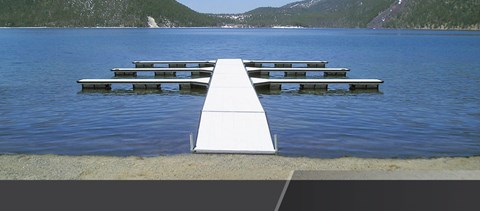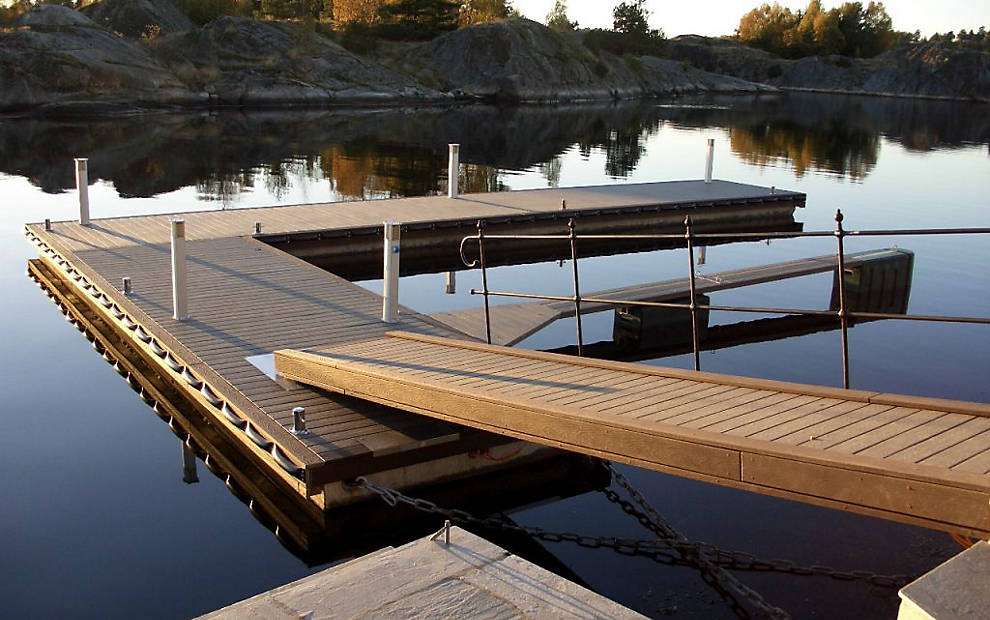Enhance Your Water Accessibility With Easy-To-Install Floating Docks
The installment of floating docks provides a practical option for enhancing water access, permitting users to involve in various tasks with simplicity and comfort. As we check out the advantages and types of floating anchors, as well as the setup procedure and maintenance pointers, it ends up being clear that such enhancements could substantially transform your waterfront experience.
Advantages of Floating Docks
Floating docks offer many benefits that make them an increasingly popular selection for marinas, beachfront buildings, and entertainment centers. Unlike fixed docks, floating anchors surge and fall with the tide, guaranteeing constant access regardless of changing water conditions.
Additionally, floating anchors are less complicated to install and preserve. Their modular design permits for simple setting up and disassembly, which is particularly beneficial for seasonal usage. When not in use., this versatility additionally helps with transportation and storage space.
The building products utilized for floating anchors, such as polyethylene and aluminum, are immune to rust, making them long lasting and resilient. This sturdiness converts to lower upkeep prices gradually, guaranteeing a far better return on financial investment.
In addition, floating anchors can improve the visual appeal of waterside residential properties, providing a seamless link between land and water. floating dock company. With their flexible style, they can accommodate different activities, from boating to angling and swimming, therefore maximizing the utility of waterside areas. Generally, floating anchors represent a reliable and useful solution for improving water accessibility
Kinds Of Floating Docks
Various kinds of floating docks accommodate different needs and applications, each developed with particular attributes to enhance capability and performance. One of the most typical kinds include modular, hinged, and roll-in floating anchors.
Modular floating anchors contain interlacing areas that enable customization in size and setup. Their convenience makes them suitable for property and business applications, suiting numerous water degrees and problems.
Hinged floating docks are developed to drop and rise with changing water levels. This kind is especially advantageous in locations with fluctuating trends or seasonal water level changes, making sure stability and ease of access throughout the year.
Roll-in floating anchors feature wheels or rollers that make it possible for simple installation and elimination. These anchors are ideal for superficial waters, permitting individuals to effortlessly maneuver them in and out of the water, making them a preferred selection for private lakefront homes.
Additionally, there are customized floating docks for details functions, such as watercraft lifts, swimming systems, and fishing anchors. Each kind is crafted to meet distinctive demands, guaranteeing that individuals find the excellent option to enhance their water accessibility and leisure experiences.
Installation Process Summary
Comprehending the various sorts of floating docks is crucial for effective setup, as each variant has special requirements and factors to consider. The installation procedure normally begins with website assessment, where one must evaluate water deepness, prospective obstacles, and local regulations. floating dock services. Correct planning makes certain that the dock will be practical and certified
Next, prepare the area by getting rid of debris and marking the setup border. This step is critical for establishing the measurements and positioning of the dock about existing structures. Depending on the dock type, anchoring systems might involve either heavy supports or screw stacks, making certain security and security.

After setting up, the dock must be very carefully positioned in the water, guaranteeing it is level and appropriately secured. Conduct a comprehensive inspection to make sure all connections are safe and that the dock is ready for usage. With appropriate installation, floating docks can use enhanced access and pleasure for several years to find.
Upkeep Tips for Durability
To maintain your floating dock in top problem, it's necessary to remain on top of routine upkeep check over here tasks. Begin by checking the dock's structure for any kind of signs of wear or damages, especially after extreme weather condition events. Seek fractures, loose fittings, or any changes in placement that can endanger stability.
Consistently tidy your floating dock to protect against algae build-up and debris buildup. In addition, check the drifts for leakages or leaks, as these can influence buoyancy.
Over time, supports can end up being loose due to changing water degrees or sediment, which may lead to dock instability. By adhering to these maintenance tips, you can boost the longevity of your floating dock, guaranteeing it remains a trustworthy water access remedy for years to come.
Enhancing Your Beachfront Experience
The pleasure of beachfront living is considerably magnified by thoughtfully improving your floating dock experience. A well-designed dock serves not just as a functional area for mooring boats yet likewise as an inviting location for leisure and entertainment. To optimize your floating dock, take into consideration integrating attributes that accommodate your way of living.

Lighting is another important aspect for improving your dock experience. Install ambient LED lights to create a welcoming ambience throughout evening hours. click for source Additionally, safety should not be neglected; ensure that your dock is furnished with sturdy railings and non-slip surfaces.
Conclusion
In final thought, floating anchors represent an effective service for improving water access, offering convenience and security in various marine settings. Their modular design promotes quick assembly and modification, accommodating diverse recreational tasks. Long lasting products guarantee resistance to deterioration, promoting longevity and marginal upkeep. By incorporating floating anchors, both functionality and aesthetic appeal can be boosted, leading to an enriched waterfront experience that sustains year-round involvement in water-related pursuits.
The installation of floating anchors presents a sensible option for improving water gain access to, permitting customers to involve in numerous tasks with simplicity and convenience. Unlike fixed docks, floating anchors rise and autumn with the trend, guaranteeing regular gain access to no matter of transforming water conditions.In addition, floating docks can improve the visual appeal of waterfront residential or commercial properties, supplying a smooth link in between land and water. Overall, floating docks represent a efficient and practical service for improving water accessibility.
By sticking to these upkeep suggestions, you can improve the durability of your floating dock, guaranteeing it continues to be a dependable water gain access to service for years to come.